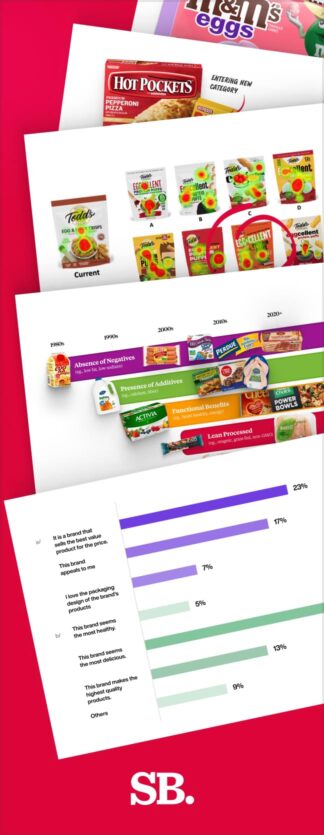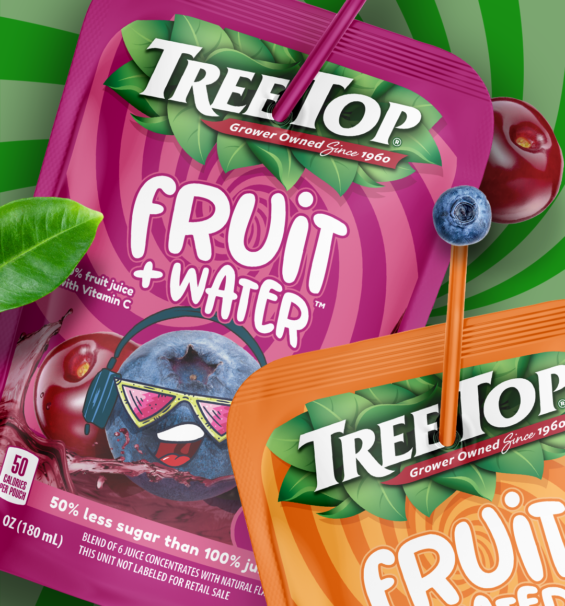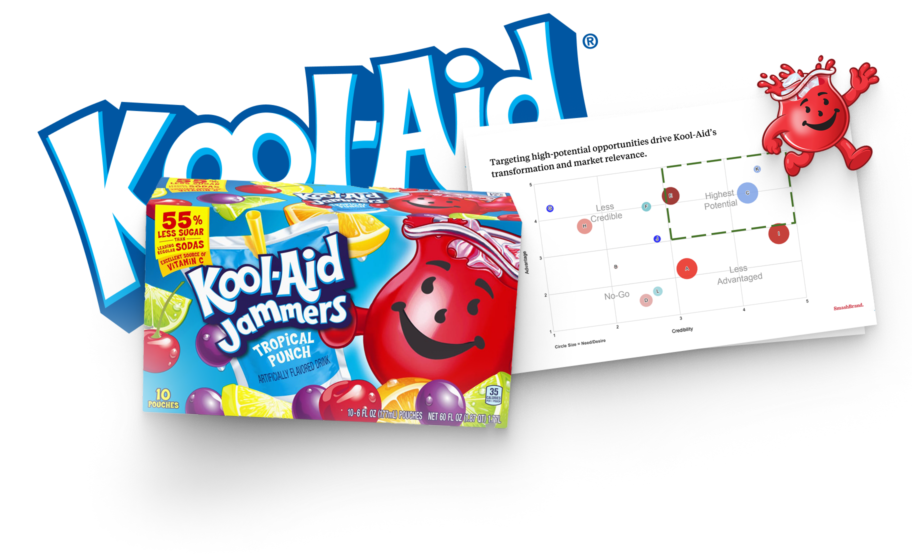You launched a new flavor, a bold format, a wellness twist. But instead of driving growth, your shelf turned chaotic. The result? Consumer confusion, retailer pushback, brand dilution, and worse, a product delisting you didn’t see coming. That’s the cost of a poorly executed product extension strategy.
Most brands treat extension strategy like a creative experiment rather than a performance-driven move. Every product line extension must reinforce what the brand stands for, not blur it. But when teams fail to understand how far their brand can realistically expand without losing its meaning, they overreach. And when that stretch snaps? You lose equity, relevance, and you risk shortening the very product life cycle you’re trying to extend.
The bitter truth? Most product extension strategies fail because they are built on opinions, rather than validation. This article shows you how to craft a successful product extension strategy using a data-backed, consumer-tested framework designed to win in-market, not just in meetings.
Product extension vs. category extension.
When expanding your portfolio, it is crucial to understand the distinction between a product extension and a category extension, as they serve different purposes and carry distinct risks.
A product extension strategy keeps you within your current category. It focuses on launching a new product, such as a new flavor, size, or format, under the same parent brand, targeting new usage occasions or consumer preferences. This approach deepens your presence without disrupting your brand identity or fragmenting your message. If done correctly, it increases brand awareness, supports the product life cycle, and drives incremental sales without cannibalizing your core business.
A category extension, on the other hand, is about entering a new market. It involves applying your existing brand equity to a different product category altogether, for instance, a snack brand launching into the beverage category. That’s a bold move, and while it can work as part of an innovative brand extension strategy, it often requires redefining your brand identity, reestablishing relevance, and overcoming new consumer expectations.
What a high-performance product extension strategy looks like.
A winning product strategy is engineered from consumer reality, grounded in insight, validated by data, and aligned with the core brand. That’s the difference between adding “just another SKU” and launching a successful brand extension that drives growth. Here’s what a successful product extension strategy looks like:
Consumer-centered ideation.
The first and most critical step in any product strategy is knowing who you’re building for, and why it matters. Too often, brands chase trends or mimic competitors, launching an existing product with a slight twist, hoping for different results. That’s not strategy, but wishful thinking.
A successful brand extension begins with identifying a validated need, something your target audience wants but isn’t currently getting from your core brand or anyone else. It’s about finding your right to win in that white space, and designing the product to meet it. That’s where business management and brand strategy intersect: when you stop guessing and start responding.
You are not just launching a new flavor but reinforcing your brand image. You’re supporting a brand lifestyle extension that fits naturally within your brand’s promise. This kind of alignment is what turns a product tweak into a performance move, and keeps your extension on-brand, on-target, and on track for in-market success.
Baseline understanding.
Before you extend anything, whether it be flavor, format, or into a new product category, you need to know exactly where your existing product line stands. This is where market research becomes necessary for a successful extension strategy.
A high-performance extension strategy starts with benchmarking your brand perception, identifying what consumers believe your brand stands for today, and mapping where it has permission to grow. If your audience doesn’t view you as credible in the space you’re aiming to enter, your extension is already at risk.
A seasoned brand strategist knows that extending a brand without first understanding its current brand positioning is a recipe for confusion, or worse, erosion. We utilize real consumer data to evaluate the performance of your current products, assess the effectiveness of your messaging, and determine whether your brand can realistically expand into complementary products or transition into a new product category without compromising its edge.
Every extension must be evaluated not only through retail behavior but also in terms of how well it communicates across digital platforms. Innovative product management listens and analyzes. It is built on a foundation of evidence. That’s what turns brand stretch into brand strength and keeps your brand strategy locked into performance, not just presence.
Channel-specific fit.
What works on Instagram doesn’t always work on a Walmart shelf. And what wins at Costco might fall flat in Target. That’s why channel-specific fit is non-negotiable in any high-performance product extension strategy. An innovative new product ideation process takes into account where the product will reside and how your target market shops in that environment. Is your audience browsing a digital shelf? Making bulk decisions in club stores? Or impulse buying in convenience retail? Each touchpoint demands different messaging, structure, and even complementary product extension tactics.
Too often, horizontal brand extensions are built for one channel and then forced into others. Likewise, vertical brand extensions (premium or value-tiered versions of an original product) may land in a higher-end store, but lose their value story in mass retail. A lack of channel alignment breaks the brand narrative and breaks the shopper’s connection.
Competitive product audits help here, but they’re just the start. We also evaluate brand stretching potential by simulating consumer behavior in each retail context, ensuring that every touchpoint reinforces the established brand and does not create noise around it. Even with brand licensing, where a third party brings a brand extension to life, failing to adapt to channel dynamics puts the entire strategy at risk. Extension without context isn’t a strategy, it’s shelf clutter.
SKU strategy and incrementally.
More SKUs don’t mean more sales. Unchecked expansion can hinder your velocity, confuse the shopper, and displace your best-performing products from the shelf. That’s why every product extension needs a clearly defined SKU strategy, one that’s not just about more options, but about more impact.
The goal? Every new SKU must earn its place by driving net-new value to your brand, whether that’s capturing a new occasion, converting a different consumer segment, or unlocking additional shelf space. If your brand extension cannibalizes your existing product line, you’re not growing. You’re shifting sales around and adding complexity with no upside.
We use testing to measure true incrementality: Does the extension attract a new buyer or increase purchase frequency? Does it complement the core brand, or blur it? That’s the lens through which we assess every launch. Because in high-performance product strategy, a new SKU should do one thing: grow the brand, not crowd it.
Data-driven concept testing.
Gut instinct doesn’t scale. That’s why we replace hunches with hard proof early and often. Data-driven concept testing is your filter for focus. It separates the ideas with real potential from the distractions that drain resources.
We use a blend of quantitative and qualitative tools to validate concepts before a single pixel gets designed or a dollar gets spent. Quantitative testing provides us with statistical confidence. Does this idea resonate with enough people to justify its launch? Qualitative insights reveal why it works, what emotional triggers it evokes, and how it can be improved.
This isn’t about asking consumers what they like. It’s about observing what drives action, purchase intent, shelf breakthrough, relevance, and believability. If a concept doesn’t hit those benchmarks, it’s out. At SmashBrand, we don’t move forward unless we’ve proven the idea can win where it matters most in the market, not in theory.
Design that communicates, fast
In CPG, you don’t get a second chance; you get three seconds. That’s how long your packaging has to grab attention, convey value, and trigger action. If your product extension design can’t do that, it won’t move off the shelf. Design that wins isn’t just beautiful, it’s strategic. It reinforces your core brand, communicates what’s new, and highlights the right purchase driver first.
We map that messaging hierarchy through consumer testing to make sure every visual and verbal cue earns its place. At SmashBrand, we combine diagnostics, behavioral tracking, and emotional response data to craft designs that sell. Because looking good isn’t enough. Your design has to work. It must stop the shopper, address their need, and prompt them to act within three seconds or less.
How to build a product extension strategy that performs.
Every successful CPG brand extension starts with the same principle: performance is a calculated outcome. Whether you’re planning a simple flavor addition or evaluating more complex types of brand extensions, the goal is always the same. You must extend without eroding. And that requires a strategy grounded in consumer reality, not internal enthusiasm.
Remember, you are launching a complementary product extension to fill shelf space and expand the role your original product plays in the consumer’s life. The following are the key steps to build an effective extension strategy that drives growth and increases market share:
Validate the consumer need.
Before you explore positioning or packaging, ask: What job isn’t being done in this category? Effective market research helps uncover those blind spots. It reveals what your target market needs, what they can’t find, and where your brand positioning can fill that gap with credibility.
Validating consumer needs will help you determine if your brand has permission to expand. Does the brand perception you’ve built support the new idea? Will this idea reinforce or distract from your brand identity? You must use real data and then move with confidence. If you don’t validate the need, the extension wouldn’t be viable.
Align with the brand’s strategic role.
Once the consumer’s need is validated, the next move is alignment. A product extension must never feel like a departure from the core brand; otherwise, it will dilute the existing messaging. It must feel like the next logical step. If it confuses your audience or muddles your message, you’re not growing, you’re eroding.
Begin by asking what the extension is intended to accomplish. Does it increase purchase frequency by adding a convenient format? Spark trail with a compelling new flavor? Expand reach into a new audience or occasion? If the answer isn’t clear, neither is the strategy.
The extension must support your brand positioning, not fight it. Don’t stretch the brand voice in a direction it wasn’t built to go. Build on it. That’s how you maintain clarity, coherence, and consistency across every touchpoint from shelf to digital. A smart extension adds value and reinforces the brand. Anything less weakens both.
Screen the concept early.
Before you invest in design, product, or even internal excitement, pressure test the idea early. An effective extension strategy never starts with sketches; it begins with screens. You can use our PREformance® testing to evaluate concepts against the only metrics that matter: uniqueness, relevance, perceived value, and pricing viability. If the idea doesn’t differentiate, doesn’t resonate, or can’t justify the price point, it’s out.
This step protects your resources and sharpens your direction. It filters out weak ideas before they become expensive mistakes, ensuring that only the highest-potential concepts move into creative development. Because in CPG, the cost of launching the wrong product is both financial and strategic.
Screen early. Invest wisely. Win faster.
Design for distinction + conversion.
Design is a decision-making engine. Your packaging must grab attention, communicate value, and drive conversion. And it has to do all that in mere seconds, whether on retail or digital shelf. That’s why messaging hierarchy is everything. What the consumer sees first, reads next, and ultimately believes; those moments determine whether your products get picked or passed.
At SmashBrand, we test this using Pack Words and Design Diagnostics, identifying which messages matter most and where they should live on the pack. An innovative extension design is visually connected to the parent brand, but distinct enough to stand on its own.
It must reinforce brand equity while signaling what’s new and why it matters. Because if it blends in too much, it gets ignored. If it stands out for the wrong reasons, it gets rejected. The goal is distinction with purpose. Design that sells, not just sits.
Test in context.
Consumers don’t buy in focus groups; they buy in chaos—crowded shelves, flashing promo tags, and competing brands shouting for attention. If your extension isn’t tested in that reality, you’re setting it up to fail.
That’s why we simulate real retail environments using our purchase intent and percept testing methodologies. They’re pressure tests that replicate what happens when your product shows up on the shelf.
We measure whether the extension captures attention, communicates clearly, and triggers action, all within the critical three-to ten-second window. You’ll know, with statistical confidence, if the pack performs before it ever hits the store. This is the final filter. If it doesn’t win here, it won’t win in-market.
Prove Incrementality.
If your product extension steals sales from your core SKUs, it’s not growth. A high-performance strategy must prove incrementally: that’s the new SKU adds volume, drives penetration, or captures a new usage occasion.
Purchase intent testing and in-market validation demonstrate that the extension generates net-new value. This is what retailers care about: shelf space is earned, and you need data to justify why your extension deserves more of it.
The extension must also complement your portfolio strategy. It must enhance brand clarity, expand reach, and reinforce your position, without overlapping, causing confusion, or creating brand fatigue. The benchmark is simple. If it doesn’t add measurable value to the business, the shelf, and the consumer, it doesn’t go to market.
Launch with retail confidence.
Retailers don’t buy into ideas; they buy into outcomes. If your product extension is headed to the shelf, it requires a sell-in story backed by data. That’s why you must arm your sales team with proof of performance, objective metrics, and real shopper behavior.
You must ensure how the extension boosts category growth, drives new shopper engagement, and earns its space without cannibalizing your current lineup. When you bring insights instead of assumptions, retailers are more likely to listen. In CPG, confidence is what you hand to your buyers, and that confidence is earned through a validated extension strategy.
Where most product extensions go sideways.
We’ve seen this too often: a promising extension crashes because the team fell in love with the idea before validating the outcome. Internal excitement replaced evidence. Speed killed strategy. The packaging looked great in a mockup, but it failed to sell on the shelf.
Here’s where it goes wrong every time:
- Internal Bias: Decisions made in the boardroom, not in the market.
- Poor Testing: Launching without consumer validation or behavioral data.
- SKU Overload: More variants, less velocity, no reason to exist.
- Mixed Messaging: No hierarchy, no clarity, no conversion.
- Inconsistent Branding: The new SKU doesn’t look, feel, or sound like it belongs.
- Poor Structural Packaging: The form doesn’t follow function or fit the retail environment.
- No Placement Testing: Packaging that looks great online, but disappears in-store.
Self-Check: Is Your Extension on the Wrong Path?
- Have you validated actual consumer need, not just internal assumptions?
- Can you demonstrate that this SKU provides incremental value to your portfolio?
- Does your messaging instantly communicate what’s new and why it matters?
- Is your pack structure optimized for real-world shelf conditions?
- Have you tested the design in its intended context, both online and in-store?
- Does this extension connect to your brand without confusing it?
If you’re unsure about any of these, stop and reassess because the only thing worse than a failed extension is repeating the mistake.

Nice Package
Don’t miss out on our monthly newsletter Nice Package!
Each month, we deliver a data-driven newsletter directly to your inbox, unpacking a critical topic in the FMCG & CPG industry.
"*" indicates required fields
Subscribe to
Nice Package.
A monthly newsletter that unpacks a critical topic in the FMCG & CPG industry.
Free Resource.

CPG product repositioning guide.
Explore the five undeniable signs your CPG product needs repositioning along with strategies for leveraging consumer insights for a guaranteed market lift.
Learn More About CPG product repositioning guide.


